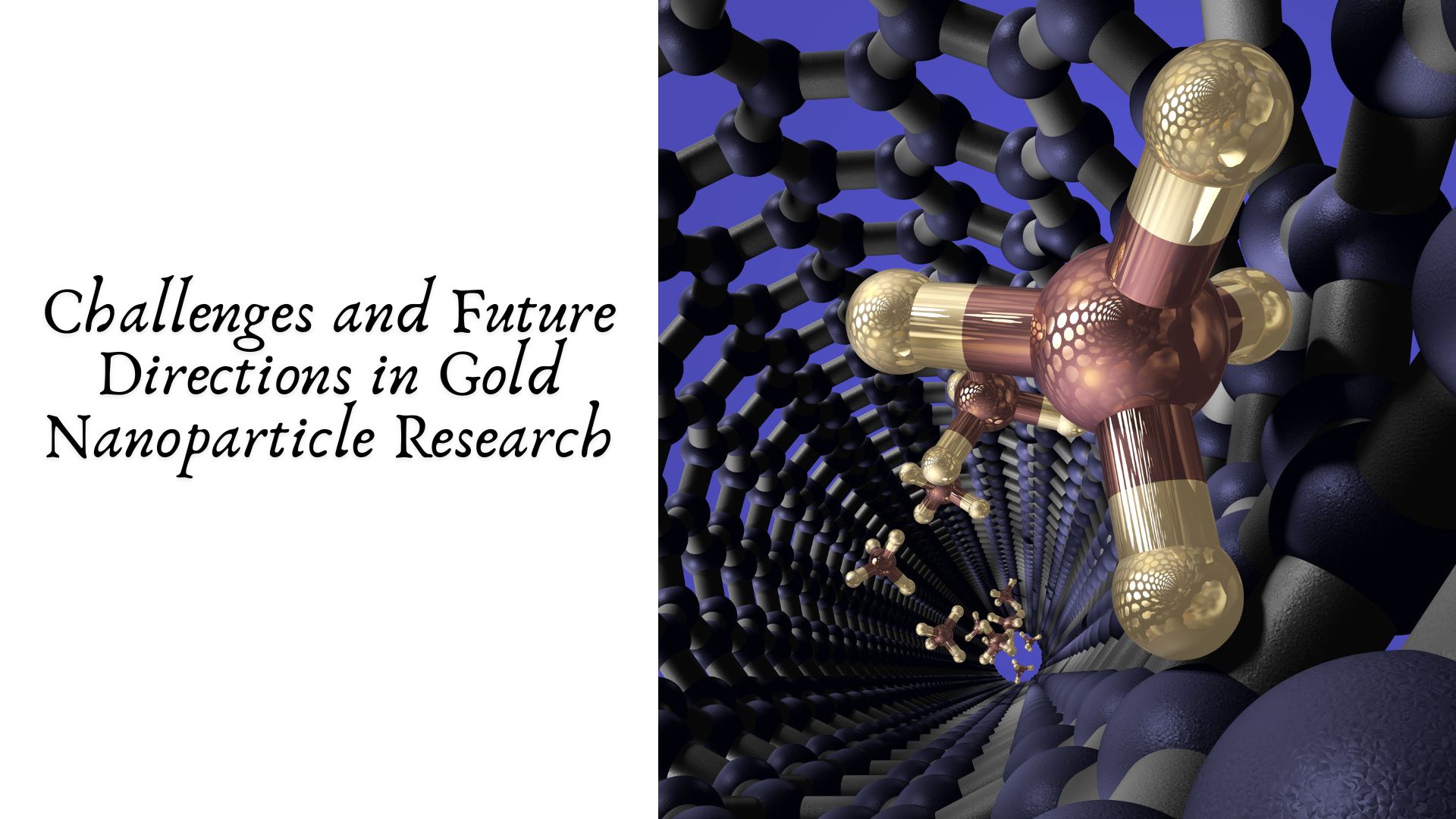Gold nanoparticles (AuNPs) have emerged as a cornerstone in the field of nanotechnology due to their unique physical, chemical, and optical properties. These particles, often ranging from 1 to 100 nanometers in diameter, have found applications across diverse fields such as biomedicine, electronics, catalysis, and environmental science. Despite significant progress, gold nanoparticle research is still fraught with challenges that hinder its full potential. This article explores the current challenges facing the field and outlines promising future directions.
Current Challenges in Gold Nanoparticle Research
Scalability and Cost of Synthesis
While gold nanoparticles can be synthesized using various methods—chemical reduction, physical methods, and biological routes—scaling up these methods for industrial applications remains a significant hurdle. Many techniques require expensive reagents, rigorous conditions, or result in low yields. Moreover, the use of gold, a precious and costly metal, adds an economic constraint, especially when large quantities are required.
Controlled Size and Shape Uniformity
The functional properties of AuNPs are highly dependent on their size and shape. However, achieving precise control over these parameters consistently remains difficult. Minor variations can lead to significant differences in optical properties, catalytic activity, or biological interactions. The challenge is to develop robust protocols that ensure reproducibility in size and morphology at both laboratory and industrial scales.
Surface Functionalization and Stability
Surface chemistry plays a crucial role in the application of AuNPs, especially in biomedicine and sensing. Functionalizing AuNPs with ligands, polymers, or biomolecules is necessary for targeting, solubility, and stability. However, these modifications often compromise the intrinsic properties of the particles or lead to aggregation over time, which affects performance and shelf life.
Toxicity and Biocompatibility
Although gold is generally considered biocompatible, the safety of AuNPs is not universally guaranteed. Studies have reported that particle size, surface charge, and coating materials can influence cytotoxicity. Understanding and predicting the interactions of AuNPs with biological systems, especially at the cellular and molecular levels, remains an area of active investigation. Long-term studies on biodistribution, metabolism, and clearance are needed to establish safety profiles.
Environmental Impact
The lifecycle of gold nanoparticles—from synthesis to disposal—raises questions about environmental sustainability. Their persistence in ecosystems, potential bioaccumulation, and impact on flora and fauna are poorly understood. Additionally, some synthesis methods involve toxic solvents or byproducts, contributing to environmental concerns.
Regulatory and Standardization Issues
The lack of standardized protocols and regulatory frameworks hinders the widespread commercialization and clinical translation of AuNP-based products. Inconsistent characterization techniques, varying definitions, and classification issues make it challenging to evaluate safety, efficacy, and performance across different studies and applications.
Future Directions in Gold Nanoparticle Research
Green and Sustainable Synthesis Methods
Future research is likely to focus on eco-friendly synthesis routes using plant extracts, microbial systems, and biodegradable materials. These biological methods offer lower toxicity and energy consumption, making them attractive for both industrial applications and environmental safety. Developing solvent-free or water-based processes can also reduce ecological footprints.
Multifunctional and Smart Nanoparticles
The development of multifunctional AuNPs capable of performing multiple roles—such as simultaneous imaging, therapy, and targeting—will open new avenues in nanomedicine. Smart nanoparticles that respond to stimuli like pH, temperature, or magnetic fields are particularly promising for drug delivery and diagnostics.
Integration with Other Nanomaterials
Combining gold nanoparticles with other nanomaterials, such as graphene, silica, or magnetic nanoparticles, can enhance their properties and broaden their application scope. These hybrid nanostructures may offer improved stability, catalytic efficiency, or synergistic therapeutic effects.
Advanced Characterization Techniques
Future research will benefit from more advanced and precise characterization tools that can analyze AuNPs in situ and in real time. Techniques like high-resolution electron microscopy, atomic force microscopy, and spectroscopic methods will help in understanding interactions at the nanoscale, particularly within complex biological environments.
Computational Modeling and AI Integration
Computational models, machine learning, and artificial intelligence can revolutionize the design and prediction of nanoparticle behavior. These tools can optimize synthesis parameters, predict biological interactions, and accelerate the discovery of novel AuNP-based applications.
Personalized Nanomedicine
Tailoring AuNPs for individual patient profiles—based on genetics, disease markers, or physiological conditions—is an exciting prospect. Personalized AuNP therapies could improve efficacy and reduce side effects, especially in areas like cancer treatment and targeted drug delivery.
Global Collaboration and Standardization
As research progresses, collaboration between academia, industry, and regulatory agencies is essential to create universal standards and guidelines. Open-access databases, international forums, and cross-disciplinary projects will facilitate knowledge sharing and regulatory harmonization.
Conclusion
Gold nanoparticle research stands at the intersection of opportunity and challenge. While the path forward is filled with obstacles such as cost, toxicity, and regulatory ambiguity, the future holds immense promise. By focusing on sustainable practices, technological innovation, and interdisciplinary collaboration, researchers can unlock the full potential of gold nanoparticles. With continued investment and scientific inquiry, AuNPs are poised to remain at the forefront of nanotechnology, driving innovations in medicine, materials science, and beyond.




